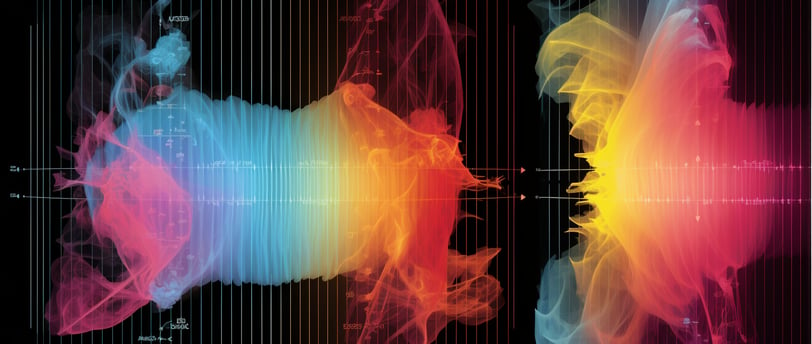Mathematical Beauty of Black-Scholes Model
This post aims to break down the mathematics underlying the Black-Scholes equation
Rajat M Ranka
9/14/20233 min read


When it comes to options pricing Black Scholes model is the very first thing that strikes ones mind. Developed during early 1970's by Fischer Black and Myron Scholes, Black Scholes model holds relevance even in todays times. It forms foundation for much of the recent advancement around options pricing. Before we pick upon the mathematical intricacies of model lets try to make intuitive sense of it. Speaking loosely Black Scholes model assumes value of an option as expected payoff of the option under risk neutral conditions. Thus entire premise of valuing an option is subjected on 2 fundamental points.
Expected Payoff - Expected payoff of the option is nothing but an estimate of anticipated future payoff taking into account various scenarios and probabilities associated with it
Risk Neutral condition - Risk neutral condition refers to a state where an investor is indifferent to risk and seeks a risk free rate of return. In other words in Risk Neutral world an expected rate of return of underlying equals the risk free rate.
Having established the framework lets delve into the mathematical principles that play behind resulting into the most beautiful formulation in options pricing. Prices of underlying are stochastic in nature i.e there is a random element present in evolution of stock prices which in turn makes value of option stochastic thus in order to create a risk neutral portfolio we must eliminate risk arising out of randomness. One of the most sought after way is to do delta hedging where we in order to offset risk from option we sell amount of stock which is proportional to change in price of option / change in price of stock (𝚫 = ∂V / ∂S). Thus we can construct a portfolio of one Long option position and a short position in underlying of delta quantity (𝚷 = V(S,t) - 𝚫S). Given we have now eliminated the risk and above portfolio stands risk-less, based on no arbitrage principle any change in value of the above portfolio should equal to growth that one would get if a equivalent sum is put in risk free interest bearing account therefore (d𝚷 = r𝚷dt) where change in value of risk free portfolio = (∂V/∂t + 1/2(𝞼^ 2)(S^2)(∂^2V/∂S^2))dt. Balancing the above equation helps us arrive at Black scholes partial differential equation - (∂V/∂t + 1/2(𝞼^ 2)(S^2)(∂^2V/∂S^2) + rS(∂V/∂S) - rV = 0) Each of the above term in the equation holds a great significance in shaping the Options price formula.
∂V/∂t = This term accounts for change in value of option with respect to small change in time
1/2(𝞼^ 2)(S^2)(∂^2V/∂S^) - This term accounts for diffusion as result of volatility and because of being higher order term it helps in smoothing the function thus making it continuous
rS(∂V/∂S) - This term represents the drift in option price as result of change in price of underlying under risk free interest rate
rV - This is the discounting term accounting for time value of money it helps to discount future cashflows to present value at risk free interest rate.
Solving the above Partial Differential Equation (PDE) results in following closed form Solution of Black Scholes model. C = S * N(d1) - X * e^(-rt) * N(d2) Where C represents the price of the call option, S is the current price of the underlying asset, X is the strike price of the option, r is the risk-free interest rate, t is the time until expiration, N(d1) and N(d2) are the cumulative standard normal distribution functions of the variables d1 and d2, respectively. Apart from above there are several other ways both Numerical and Analytical to arrive at same Black Scholes Formulation.
Despite being mathematically profound Black Scholes model fails to completely capture real market picture because of following inherent assumptions made -
Black Scholes model assumes that Underlying asset follows a log normal random walk however this is not completely true as in real world scenario assets have fat tails i.e extreme events are more likely than what suggested by Normal Distribution
Black Scholes model is developed based on constant volatility however this is not strictly true in real world scenario as Volatility changes with regime change
Black Scholes model assumes Option price to be a continuous function of underlying and time however in reality markets experience sudden jumps thus making price discontinuous.
